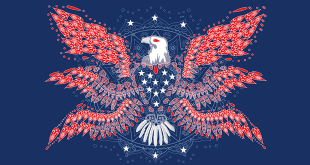 The history of silk is shrouded in mystery. Some historians say that silk originated in China about 10,000 years ago. In China, however, legend has it that Empress Si Ling Chi of China was the first one to discover silk more than five thousand years ago. The story goes that while sitting under a mulberry tree in her palace garden, the Empress was having tea. A cocoon fell into her hot cup of tea from the branches of the mulberry tree. And as she watched, a strong white thread unraveled itself.
The history of silk is shrouded in mystery. Some historians say that silk originated in China about 10,000 years ago. In China, however, legend has it that Empress Si Ling Chi of China was the first one to discover silk more than five thousand years ago. The story goes that while sitting under a mulberry tree in her palace garden, the Empress was having tea. A cocoon fell into her hot cup of tea from the branches of the mulberry tree. And as she watched, a strong white thread unraveled itself.
That accidental process of unravelling the silkworm’s cocoon hasn’t changed much in the last thousands of years. Cocoons are still dipped in hot water to loosen the tightly woven filaments that make up a silkworm’s cocoon. These filaments, or fine threads, are unwound onto a spool. Each cocoon is made up of a filament between 600 and 900 meters long! Imagine that! You could take just one tiny cocoon and when you unravel its filament, you could wind it around your house more than eight times. Of course, these filaments are very very thin. Between five and eight of these super-fine filaments are twisted together to make one silk thread.
By the 14th century BC, the production of silk gradually developed into an industry in China. In fact it became one of the principal elements of the Chinese economy. Silk was being used for musical instruments, fishing-lines, bowstrings, and even rag paper, the world’s first luxury paper.
For more than two thousand years, the Chinese kept the secret of silk to themselves. It was one of the most zealously guarded secrets in history. Anyone found guilty of smuggling silkworm eggs, cocoons, or mulberry seeds was put to death. Silk became the cloth of emperors and royalty and a great source of wealth. Within the palace, the emperor used to adorn a robe of white silk while outside, he, his principal wife, and the heir to the throne wore yellow, the color of the earth.
Common people were prohibited from wearing silk. Even the merchants trading silk were allowed to wear the exclusive fabric. Silk was stocked in warehouses for an emergency.
The Chinese used silk in many ways. Civil servants were paid in quantities of silk, and it was a way for the rulers to reward their subjects. Silk was also used as currency in domestic as well as foreign trade. After all, barter trade was the most common way of trading. So Chinese traders exchanged their silk in return for spices and jewels bought in India.
Gradually, people from different sections of society began wearing tunics of silk, and silk came into more general use.
Letting the secret out of the silky bag
In 200 BC, that’s about 2200 years ago, a large number of people migrated from China and settled in Korea. They carried with them the secret of silk production. From then on, the secret of silk slowly travelled throughout Asia. It took about five hundred years for the knowledge of silk production to reach India. But once it did, India soon started trading silk with the Persians. However, in less than a hundred years, the Persians, too, had mastered the art of silk weaving, and started developing their own rich patterns and techniques.
It was only as late as the 13th century AD, that Italy began silk production, with the introduction of 2000 skilled silk weavers from Persia. That’s only about 700 years ago, which isn’t very long considering that silk came to India one thousand years before that.
Eventually, silk production became widespread in Europe, but the widespread production of silk hasn’t dented China’s image as the Silk Giant. Even today, five thousand years after the first cocoon fell into the Empress’ teacup, China is still the world’s largest producer of silk.
 Kids Portal For Parents India Kids Network
Kids Portal For Parents India Kids Network





